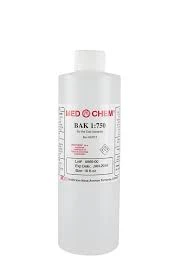polyaluminum chloride coagulant
The Importance of Poly Aluminum Chloride Coagulant in Water Treatment
Water is a vital resource for all living organisms on Earth, and ensuring its quality is paramount for public health and environmental sustainability. Among the various methods employed for purifying water, chemical coagulation plays a crucial role, particularly with the use of poly aluminum chloride (PAC). This article delves into the significance of PAC in water treatment processes, its mechanisms, and its advantages over traditional coagulants.
What is Poly Aluminum Chloride?
Poly Aluminum Chloride (PAC) is a synthetic coagulant that has gained popularity in the water treatment industry due to its effectiveness and efficiency. It is an aluminum-based compound, typically produced in a solid or liquid form, and is characterized by a complex structure that includes multiple aluminum ions. PAC is commonly used to remove contaminants from drinking water, wastewater, and industrial effluents.
Mechanism of Action
The process of coagulation involves the destabilization of colloidal particles, allowing them to clump together into larger aggregations known as flocs. These flocs can then be easily separated from water during subsequent processes such as sedimentation or filtration.
When PAC is added to water, its high charge density facilitates the neutralization of negatively charged particles, including organic matter, bacteria, and suspended solids. The aluminum ions in PAC attract and bind these particles, leading to the formation of larger flocs. This is particularly effective in turbid waters where traditional coagulants, such as alum, may struggle due to insufficient charge neutralization.
Furthermore, PAC operates effectively over a wide range of pH levels, enhancing its versatility in varying water conditions. This adaptability makes it a preferred choice in many municipal and industrial water treatment facilities.
Advantages of Using PAC
polyaluminum chloride coagulant

1. Higher Efficiency Compared to traditional coagulants like alum, PAC requires a smaller dosage to achieve the same or better results in terms of turbidity removal. This not only reduces chemical costs but also minimizes the environmental impact associated with the treatment process.
2. Lower Residual Aluminum One of the significant advantages of PAC is its lower residual aluminum content in treated water. This is crucial because excessive aluminum can pose health risks if it remains in drinking water. As a result, PAC is often preferred for drinking water treatment, adhering to stringent regulatory standards.
3. Improved Settling Rates The flocs formed using PAC tend to be denser and more compact, leading to faster settling rates. This characteristic enhances the efficiency of sedimentation processes, reducing the overall residence time required in treatment facilities.
4. Broad Application PAC is effective across a variety of applications, including drinking water treatment, wastewater treatment, paper manufacturing, and textile processing. Its versatility makes it a valuable tool in numerous industries.
5. Environmental Sustainability The ability to reduce the overall dosage and minimize sludge production contributes to a more sustainable water treatment process. Lower chemical input means reduced environmental footprints, aligning with global efforts towards greener practices.
Challenges and Considerations
While PAC offers several advantages, it is essential to consider factors such as its cost-effectiveness compared to other coagulants in specific applications. Additionally, the need for proper dosing and monitoring is paramount to ensure optimal performance.
Conclusion
Poly Aluminum Chloride plays a vital role in modern water treatment processes. Its superior coagulation properties, efficiency, and versatility position it as a leading choice among water treatment professionals. As water quality continues to be a global concern, the use of PAC presents a promising approach to ensuring safe, clean, and sustainable water resources for future generations. Through ongoing research and development, the utilization of PAC is likely to expand, further enhancing its pivotal role in environmental management and public health.
-
Water Treatment with Flocculant Water TreatmentNewsJun.12,2025
-
Polymaleic AnhydrideNewsJun.12,2025
-
Polyaspartic AcidNewsJun.12,2025
-
Enhance Industrial Processes with IsothiazolinonesNewsJun.12,2025
-
Enhance Industrial Processes with PBTCA SolutionsNewsJun.12,2025
-
Dodecyldimethylbenzylammonium Chloride SolutionsNewsJun.12,2025





